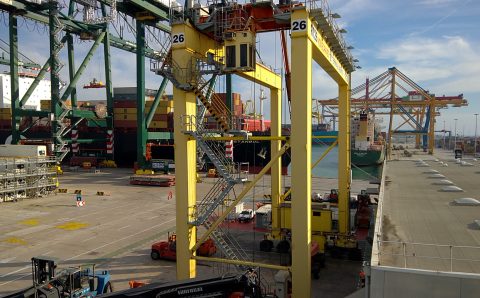
Port of Valencia has its rail game strong
The Spanish port of Valencia was awarded the REIF Shift to Regional Rail prize by the Italian Institute for Transport and Logistics (ITL). The distinction reflects the port’s success in giving a prominent position to rail freight transport in its operations. Eleven per cent of the port’s volumes are transported by rail, a percentage three times bigger than Spain’s average rail freight transport share (four per cent).
Do you want to read the full article?
Thank you for visiting RailFreight.com. Become a member of RailFreight Premium and get full access to all our premium content.
Are you already a member?
Having problems logging in? Call +31(0)10 280 1000 or send an email to customerdesk@promedia.nl.




